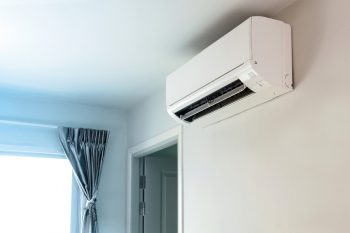
Running a refrigerator efficiently requires a good understanding of the kind of current it needs. Whether you’re planning to buy a new refrigerator, trying to calculate your energy consumption, or simply curious about how your appliances work, this guide will provide you with the information you need.
The kind of current required to run a household refrigerator typically ranges between 3 to 5 amps when running on a 120-volt circuit. However, the in-rush amps can hit up to 20, so a 15 to 20 amp dedicated circuit is recommended. The exact current requirement can vary based on the size and model of the refrigerator. Always refer to the manufacturer’s specifications for accurate information about your specific model.
Understanding Electric Current in Relation to Appliances
Firstly, it’s crucial to understand what we mean by electric current in relation to appliances. Electric current is the flow of electric charge through a circuit that powers the device. Appliances can be categorized into three types: those that heat something (e.g., toasters and coffee makers), those that move something (e.g., food processors and vacuum cleaners), and those that do both (e.g., hair dryers).
How a Refrigerator Uses Electric Current
A refrigerator uses electric current to power a closed system that relies on a refrigerant to absorb heat and carry it away from the refrigerator’s contents. The main components of a refrigerator include a compressor, a condenser, an evaporator, an expansion valve, and a refrigerant. Refrigerators use electrical energy to power this cooling process, with ENERGY STAR certified refrigerators using at least 10% less measured energy than the minimum federal efficiency standards.
Typical Current Requirement for a Household Refrigerator
The kind of current required to run a household refrigerator typically ranges between 3 to 5 amps when running on a 120-volt circuit. However, the in-rush amps can hit up to 20, so a 15 to 20 amp dedicated circuit is recommended. The average wattage of a refrigerator ranges from 100 to 300 watts, as the compressor only runs about 30% of the time.
The Role of Voltage and Amperage
Voltage and amperage play a crucial role in determining the current needed for refrigerators. Most refrigerators operate on a 120-volt circuit, so you can divide the power rating (in watts) by 120 to determine the required current (in amps). For example, if a refrigerator has a power rating of 725 watts, the amperage draw would be approximately 6.04 amps (725 watts / 120 volts).
Size and Model of a Refrigerator
The size and model of a refrigerator affect its current requirement. Generally, larger refrigerators with more features require more current to function. The exact running amperage or wattage can be found on the rating plate on the unit.
Consequences of Too Much or Too Little Current
A refrigerator receiving too much or too little current can lead to various consequences, including damage to its components and reduced efficiency. Overvoltage can disrupt the cooling process, while low voltage can cause reduced cooling performance and increased energy consumption.
Ensuring Right Amount of Current
To ensure your home’s electrical system can provide the right amount of current for your refrigerator, determine the refrigerator’s power requirements and calculate the electrical load. It is recommended to have a dedicated circuit for your refrigerator, with a 15 to 20 amp circuit breaker.
Energy-Efficient Refrigerators
Energy-efficient refrigerators consume less energy, which can result in lower current requirements. ENERGY STAR-certified refrigerators are about 9% more energy-efficient than models that meet the federal minimum energy efficiency standard.
Tips to Optimize the Use of Current
To optimize the use of current by a refrigerator, follow these tips: set the appropriate temperature, clean the condenser coils, defrost manually if needed, position your fridge in a cool place, allow air circulation, check the door seals, minimize door opening, cool food before storing, organize your fridge, and cover stored food.
Conclusion
Understanding the kind of current required to run a refrigerator is essential for its efficient operation. Whether you’re calculating energy consumption or planning to buy a new refrigerator, this guide provides the information you need. Always refer to the manufacturer’s specifications for accurate information about your specific model.
Frequently Asked Questions
What is an ENERGY STAR certified refrigerator?
An ENERGY STAR certified refrigerator is a refrigerator that has been independently certified to use less energy and help reduce greenhouse gas emissions. These appliances meet strict energy efficiency criteria set by the U.S. Environmental Protection Agency or the U.S. Department of Energy.
What is the importance of a dedicated circuit for a refrigerator?
A dedicated circuit for a refrigerator ensures that the appliance has the necessary amount of current to function properly. It minimizes the risk of overloading the circuit, which can cause power outages and increase the risk of electrical fires.
What is the standard voltage for a household electrical outlet in the U.S.?
In the U.S., the standard voltage for a household electrical outlet is 120 volts.
What are the consequences of running a refrigerator on low voltage?
Running a refrigerator on low voltage can lead to reduced cooling performance and increased energy consumption. It may also cause the compressor to overheat, reducing its lifespan and potentially damaging other components.
How can I find the power rating of my refrigerator?
The power rating of a refrigerator is usually found on the rating plate on the unit. This plate is often located on the inside of the fridge, on the door, or at the back of the unit. It provides information such as the model number, serial number, and electrical specifications of the appliance.












